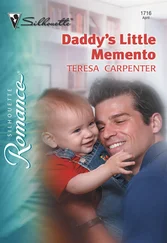On the way to the airport, Park testified, Simpson kept complaining of being “hot.” He’d rolled his window down and turned on the air-conditioning. In fact, the night was unseasonably cool. Simpson then asked Park where the light was. In the rearview mirror, Park could see that Simpson was “checking his bags.” What was in those bags, I wondered. Perhaps… a murder weapon? Bloody clothes? I could see the grand jurors focusing closely on Park’s words; were they wondering the same thing?
All in all, Park’s testimony dovetailed snugly with Kato’s. And it had the effect of strengthening both.
Mezzaluna’s weekend bar manager, Karen Crawford, was up next. She testified that Nicole and her party left the restaurant between 8:30 and nine. Shortly afterward, she’d gotten a call from “the older woman in the party”-obviously Juditha Brown-saying she’d lost her glasses. Karen found them lying by the curb outside the restaurant and sealed them in an envelope.
“About five minutes later, there was another phone call,” she said. This one from Nicole.
“What time was that, approximately?” I asked.
“I would say it was between nine-thirty and nine-forty-five,” she answered. Crawford called Ron Goldman over to the phone to make arrangements to deliver the glasses. Then he left the restaurant carrying the envelope.
So where did that leave us in terms of time? Nicole and her mother spoke at around 9:45 P.M. Police had talked to the neighbor, Pablo Fenjves, who had reported being bothered by the wailing of a dog on the night of the murders. The barking, he thought, had begun between 10:15 and 10:30 P.M. By midnight the victims were dead. That’s when Sukru Boztepe and his wife, Bettina Rasmussen, came upon the body of Nicole Simpson.
Sukru and his wife were one of those Mutt-and-Jeff couples. He was large, burly, and dark, with a long ponytail. She was slender and fair, her blond hair cropped short just below her ears. The few minutes I had with Sukru before testimony were tense. He still hadn’t gotten over his discovery of a murder scene. He stammered and groped for words until finally, when he got to the point of telling how he’d first seen the body, his voice broke and he covered his eyes with one hand.
Taking the witness stand somehow seemed to calm him. He told how he’d come home to his apartment on Montana Avenue-only about six hundred feet from the crime scene-at around 11:40 P.M. He found his upstairs neighbor sitting with a big white Akita. This, though Sukru didn’t know it, was Nicole Brown’s dog, Kato. Sukru and Bettina offered to keep the dog until they could get it over to an animal shelter the following morning.
“How did it behave in your apartment?” I asked.
“He was pretty nervous, and he was going to the doors and windows, running around in the house.”
“Did you see anything unusual about his legs or his body?” I asked.
Sukru swallowed hard. “On the legs, there was blood.”
About midnight, the couple decided to take the animal out to see if they could find its owner. The animal headed toward 875 Bundy. Home.
“When we got closer to the place, he started to pull me a lot harder than normal,” Sukru said. “We were walking on the right side of Bundy and the dog stopped and turned right and looked at-”
There was silence in the courtroom as Sukru tried to go on.
“-and I turned right and looked, too. And I seen her body.”
The Akita’s role in all this was eerie, to say the least. You had to wonder what that poor animal had witnessed. Had he tried to defend his mistress? Probably not. Police canine experts later examined Kato, summarizing their conclusions in a “witness statement.” Kato, they concluded, was such a low achiever that he probably could not have defended himself, let alone a human. The chief trainer for the LAPD’s K-9 unit reported that Kato had a “very nice disposition… [but] inadequate instincts or courage to protect his territory, owner or himself.”
Thanks to his primitive loyalty, however, we were able to postulate that the murders had occurred between the time he began to howl and the time he was discovered wandering on Bundy with bloody paws-a window of perhaps an hour. That dog, it seemed, had a better handle on time of death than the coroner did.
I only wish he could have spoken for the criminalists.
A case like this-with no eyewitnesses save, possibly, a white Akita-clearly would hinge on physical evidence, especially blood evidence. That’s why I had been so concerned from the start about which criminalists we could get assigned to the case. It was critical that we establish two things: first, that the blood samples had been collected and preserved properly; and second, that the samples had undergone reliable analysis. The criminalists had to do their job competently, and it was essential that they be able to present themselves credibly to a jury. Phil’s tepid assurance that criminalist Dennis Fung was “okay” had set off alarm bells in my head.
My first meeting with Dennis Kirk Fung had been on Monday, June 20, in the waiting room outside the grand jury chamber. He’d come with Collin Yamauchi; Fung was the criminalist on the scene, and Yamauchi the criminalist/analyst in the lab. They’d handed over their reports to me, and I’d scanned them quickly, trying to envision them as testimony that would be coherent enough for a juror to follow. Fung’s task was relatively straightforward: to tell where he collected the blood and how he packaged it. I’d told him to review his reports so he’d be prepared when I took his testimony later in the week. He bobbed his head up and down as I spoke.
Then I’d turned to Collin Yamauchi. In theory at least, he had the more difficult task.
The LAPD crime lab had just recently begun to do DNA testing. None of its technicians was all that experienced in the process. They were perfectly capable of performing the simplest test, called PCR DQ alpha. But it had to be done correctly. When contamination occurs, you get wildly erratic results. That was why I breathed a sigh of relief when I read Collin’s report: in this case, the results were perfectly consistent. Every blood drop on the trail at Bundy displayed O. J. Simpson’s genetic markers, and only his genetic markers. Bull’s-eye.
It was even possible that his blood was on the Rockingham glove. Preliminary tests indicated that this was the case. We had already found markers on that glove from Ron’s and Nicole’s blood. If we could establish that the glove bore a mixture of blood from both victims and from the defendant, that would be very powerful evidence. For that, however, we would need to send the samples away to Cellmark for more sophisticated testing.
On the witness stand, Collin turned out to be pretty effective. He handled the glove business well, leaving open the possibility that it had been stained with a mixture of the blood of both killer and victims. He did stumble at explaining the fundamentals of DNA testing, but it is very complicated stuff and he hadn’t much experience on the stand. I assumed he would get better with practice.
Dennis Fung was another story.
When Dennis took the witness stand on Wednesday, June 22, I led him through a pro forma description of how he collected the blood samples by wetting swatches of cloth with distilled water, then applying them to each bloodstain. We established that he’d handed them over, as the protocol required, to Yamauchi, back in the lab.
“Are you familiar with what is known as a stride analysis?” I asked him.
“Yes, I am,” he replied.
Whenever shoe prints or footprints are found at a crime scene, the criminalist may decide to do a stride analysis to determine whether the suspect was walking or running. Fung claimed he had done such an analysis. Naturally, I asked him if he could tell us whether the person making the footprints was moving quickly or at a normal pace.
Читать дальше












